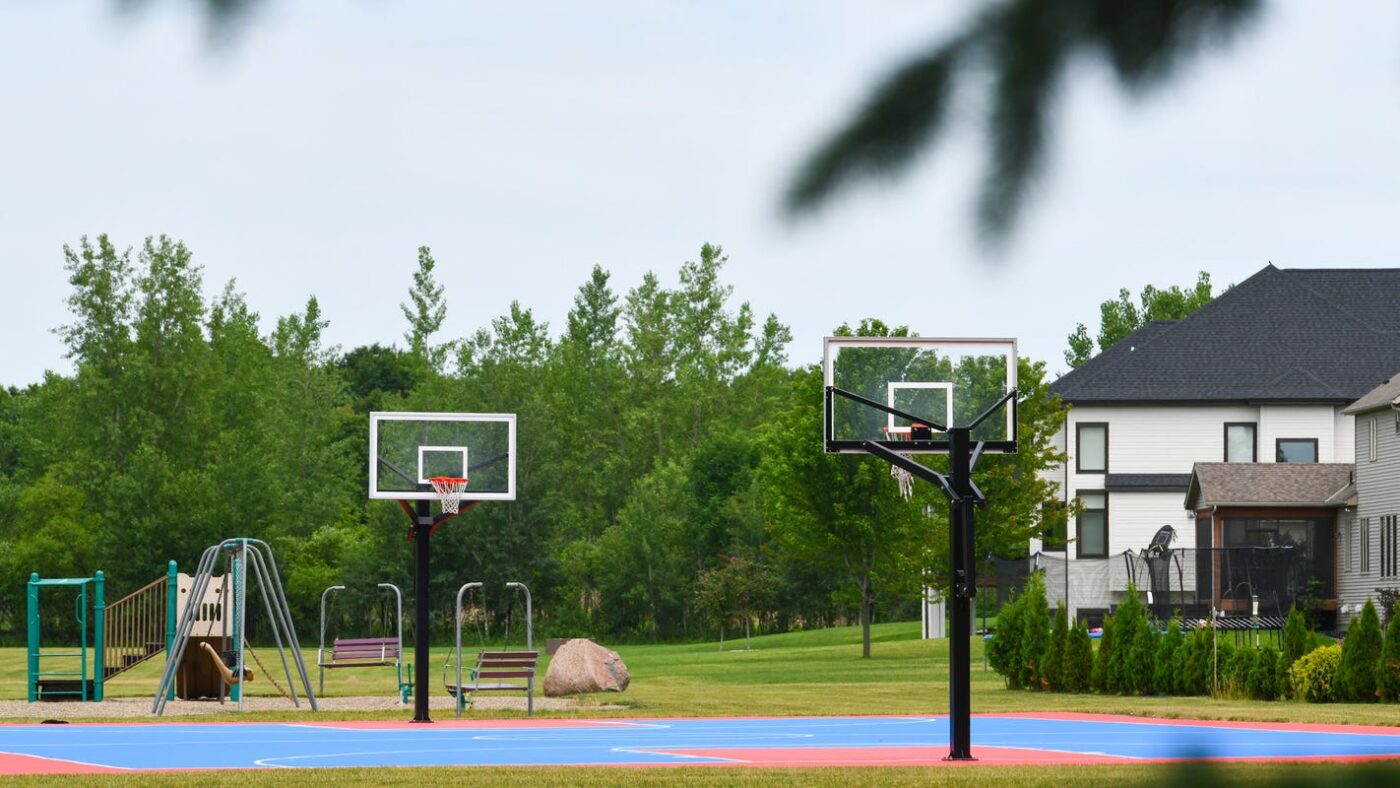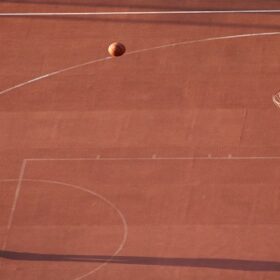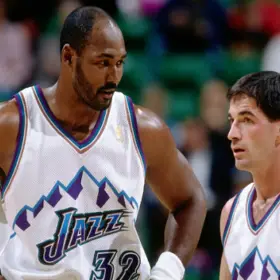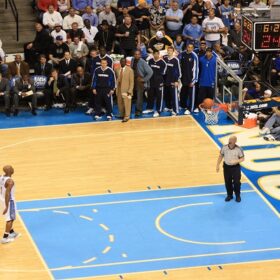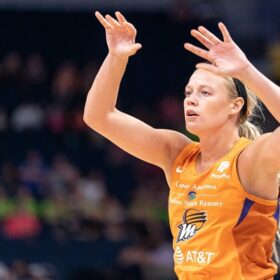A basketball court is a rectangular floor that contains baskets at each end. Most of the professional basketball courts are made of maple wood, and they are highly polished. Basketball courts are symmetric in nature. It means half of the court is the mirror image of the other part.
The size of a professional or organized basketball court is 94 ft. X 50 ft. Coaches, players, fans, and spectators use the same basketball court terminology to standardize the game and avoid confusion. So if you want to enter into the magical world of basketball as a player, enthusiast, or spectator, you have to know the terminology of a basketball court. This post will help you out with that.
Before we discuss each parts of the basketball court, let me list them first below:
- Sidelines
- Baselines
- The Paint (Free Throw Lane)
- Free Throw Circle
- Three-Point Line
- Center Jump Circle
- Division Line
- Block
- Wing
- Corner
- Elbow
- Basket
Sidelines

The sidelines of the court are the two boundaries that run through its length. The court’s width determines the location of the lines, and the width of basketball courts usually are 50 ft.
Baselines

The baseline or the endline of a basketball court runs from one sideline to another. They are located around 4 ft. behind the basket. Since the average width of a basketball court is 50 ft., so the standard length of the baseline is also 5o ft. It is essential to understand that baseline and endline are not the same things but interchangeable terms that depend on the ball position.
The Paint (Free Throw Lane)

The standard size of the free throw lane is 19 ft. X 12 ft. wide. It is rectangular and used to line up players during a free throw. The player who shoots the free throw stands at the top of the free throw lane. At the same time, other players have to stand in the marked spots on each lane’s side.
When it comes to offense, any player won’t be able to stand in the lane for more than 3 seconds unless they are moving towards the basket with the ball. On the other hand, the defense might stay in line for more than three seconds to guard offensive players when it comes to the NBA. Every basketball player is bound to follow this 3-second rule, or else he or she will be penalized.
Free Throw Circle

There are two free throw circles, and each of them has a diameter of 12 feet. They come into play in the time of jump balls and free throws. During the attempt of a free throw, the player must have to stay inside of the circle. On the other hand, when it comes to jump balls, all the non-jumpers need to remain outside of the free throw circle until the jumpers hit the ball.
Three-Point Line

This is the semicircle part that surrounds the area of the basket on each side. If you score behind this line, then you will get three points instead of the regular two points that players get from the field goal. Perhaps this is the main reason for which this section is called three-point line.
In women’s college and high school basketball games, this line is 19 ft. 9 in. away from the middle of the basketball hoop. However, when it comes to college basketball, the three-point line is 20 ft. 9 in. apart from the center. On the other hand, when it comes to the NBA, it is marked 23 ft. 9 in. away from the hoop and 22 ft. from the sideline.
Center Jump Circle

The center jump circle is the area where the action starts. So it is fair to conclude that this is the heart of the court. This is a circular area that has a radius of 6 feet. When the ball gets tipped, all players except the two jumpers need to stand outside of this center jump circle. In NBA court, you will see two jump circles at the free throw line. It is used in NBA for situations like held ball.
Division Line

The line that runs through the middle of the court is known as the division line. Just like the name suggests, it divides the court into two identical parts. The division line is also known as the halfcourt line. When it comes to school or college basketball games, a team gets 10 seconds to take out the ball from the division line. But in NBA players only get 8 seconds to get the ball across the halfcourt line.
Block

This court area works as a buffer because it separates the offensive players from the defensive ones. During the attempt of a free throw. It is known as a strategic area in the court because, during the game, any player (regardless of defensive or offensive) who wins this area gains a competitive advantage in the game.
Wing

Similar to a soccer game, the wing in a basketball court is located at the side. The area near the extended free throw line is known as the wing.
Corner

The area where the baseline meets the sideline is known as the corner. This is the favorite place in the court for those players who like to shoot. This is mainly an open are where zone defense takes place. Defensive players can also use this area strategically to trap the offensive players.
Elbow

The area in the court where the lane line meets the free throw line is known as the elbow. Like block, the elbow is also known as a strategic location in the court because any player (regardless of defensive or offensive) who wins the elbow position gains an advantage.
Basket

There are two baskets in the court, and both of them are located at the end of the court (4 ft. inside the baseline). It is made of backboard and ring, which is used to hold a net. Baskets are ideally designed to let the ball pass through the ring and net. The backboard of the basket is 72 in. wide. The ring’s diameter is 18 in., and it is placed 10 ft. off the floor.
Conclusion
Basketball is a thrilling game because a split second can change the result. To understand and play the game better, you should know the different parts of the basketball court. We hope that this post has helped you out with that.
Check out the list of best portable basketball hoop made by outdoorbasketballhub.com!

